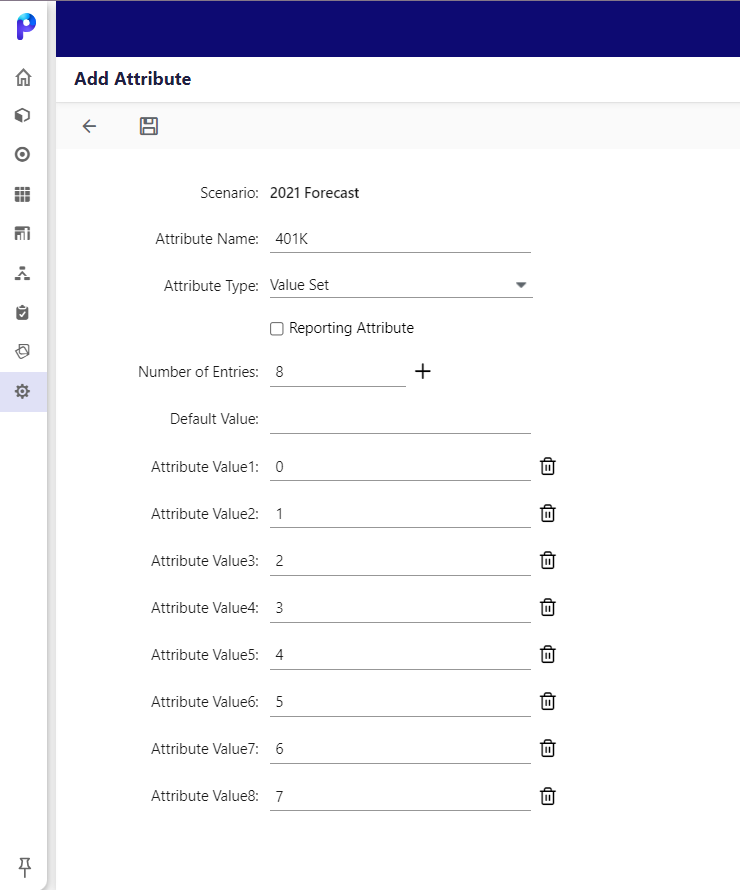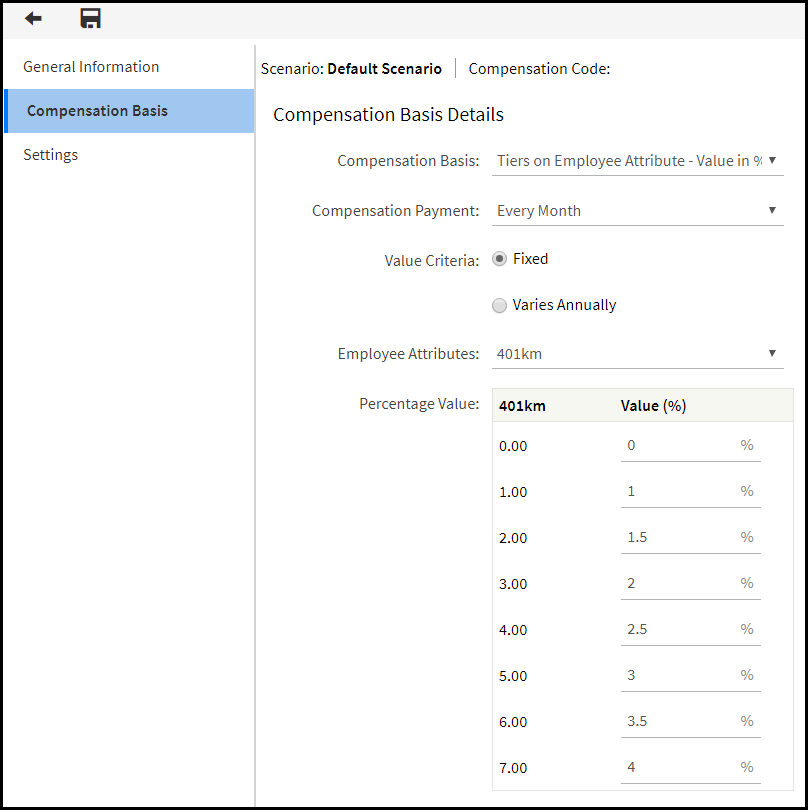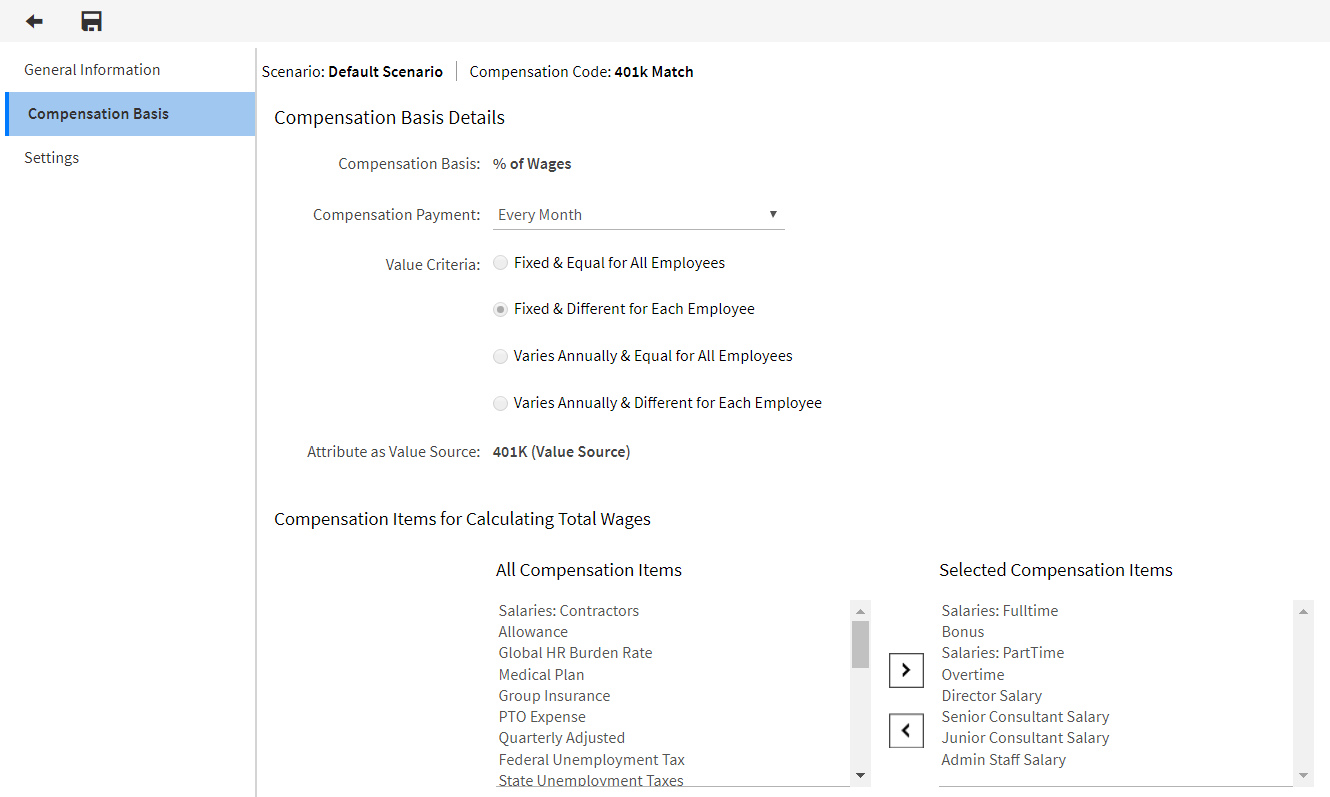- 1 Minute to read
- Print
- DarkLight
- PDF
How to Set Up 401k Match?
- 1 Minute to read
- Print
- DarkLight
- PDF
In workforce planning setup, incorporating a 401k match ensures competitive retirement benefits, promotes employee engagement, and aligns with long-term financial security goals.
Refer to the following examples to learn how to set up a 401k match. These examples illustrate different scenarios and provide step-by-step instructions on configuring the 401k match feature. By reviewing these examples, you can understand how to successfully establish a 401k match that meets your needs.
Example 1:
Follow these steps to set up the 401k match after one year of service:
- Click the Workforce Attributes tab.
- Set up the attribute with the % contributed - up to the max contribution that the company will match (for example 7% in this case).

- Navigate to the Compensation Items tab.
- Set up a compensation item that will use the attribute above and calculate the amount the company will match. Calculation is based salaries & commissions (% of wages). For example, if the employee contributes 2% of their wages to the 401K plan, the company will match @ 1.5% of their wages the Account should be a statistical account.

Create a 2nd compensation item so the match will not kick in until the employee has been with the company for a year: Map the compensation item to the 401K. Match Exp Account Compensation item should be tiers on Employee Attribute - Value in % of Wages - Attribute is Years of Service. Set up 2 tiers - one for less than 1 year, and one for over 1 year (note: up to 1 year on the first tier will be the entire first year of service). Map the compensation item to the 401K Match load above which has the calculated company match for all employees. This compensation item will take the compensation item above and record the expense only for employees with service over 1 year.
Example 2
Set up a compensation item for 401k match that is fixed and different for each employee. Based on % of wages.


